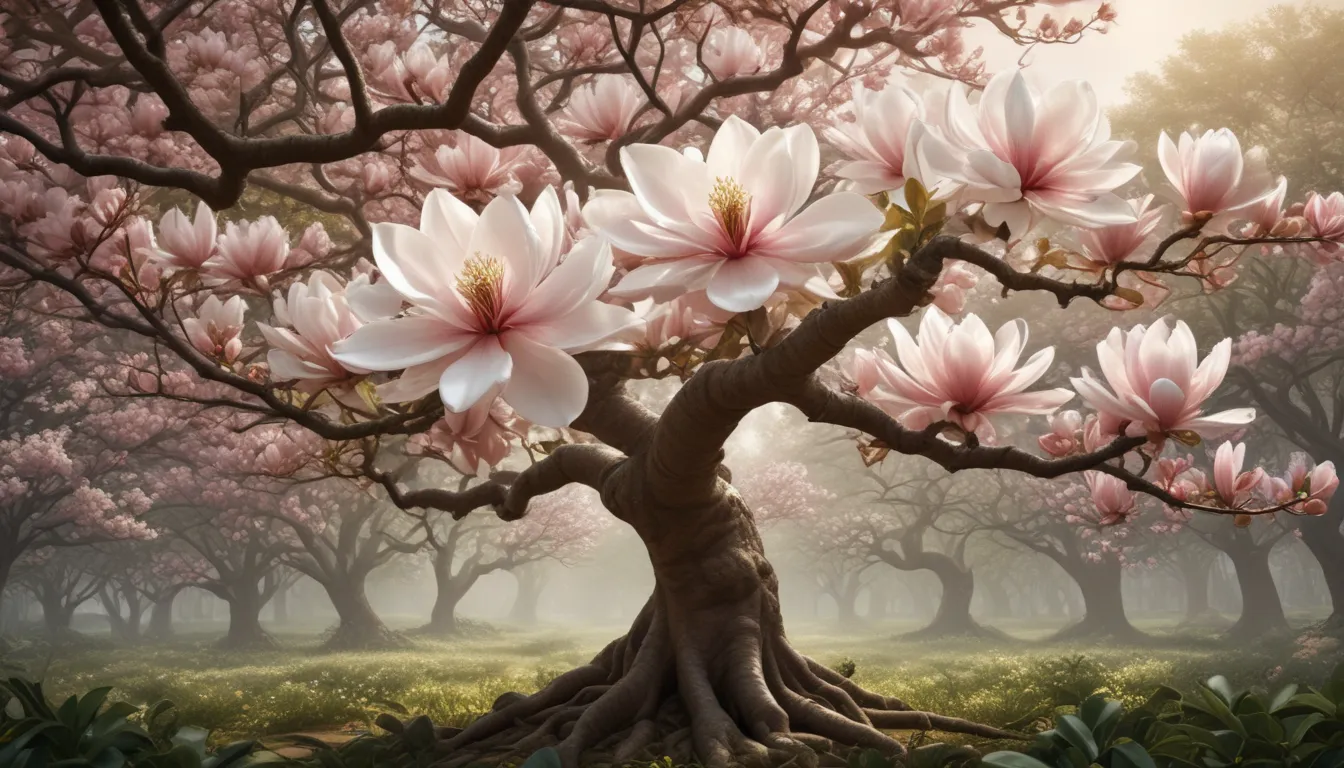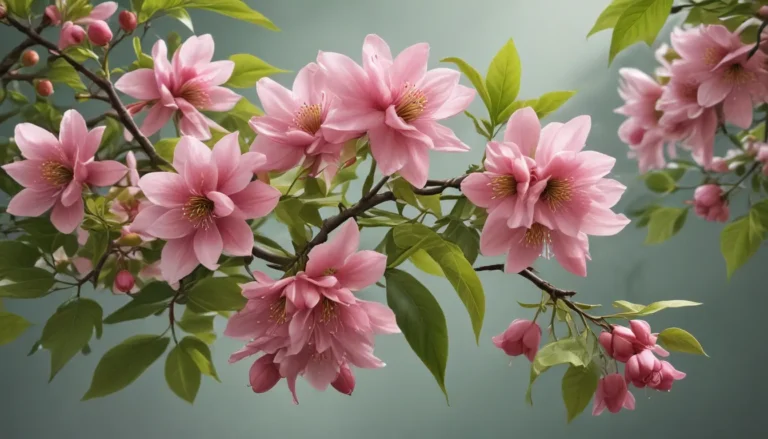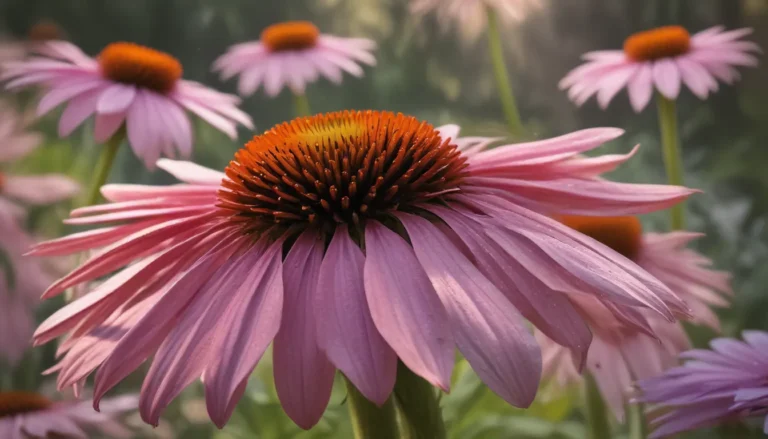The pictures we use in our articles might not show exactly what the words say. We choose these pictures to make you interested in reading more. The pictures work together with the words but don’t take their place. The words still tell you the important facts.
Magnolia trees stand as timeless witnesses to the passage of time, embodying strength, elegance, and beauty. With a history dating back over 95 million years, these majestic trees have captured the hearts of nature enthusiasts and gardeners worldwide. Let's embark on a delightful journey to uncover the fascinating world of magnolia trees, exploring their ancient origins, diverse species, and cultural significance along the way.
The Magnolia’s Ancient Roots
Magnolia trees are ancient beings, tracing their lineage back millions of years to a time when dinosaurs roamed the Earth. With a history that spans civilizations and continents, these remarkable trees symbolize endurance and resilience in the face of changing landscapes. The magnolia's presence throughout history serves as a testament to its enduring allure and timeless beauty.
Unveiling the Legacy of Pierre Magnol
The name "magnolia" pays homage to the French botanist Pierre Magnol, whose groundbreaking work in the field of botany left an indelible mark on the scientific community. As a tribute to his contributions, the genus Magnolia was named in his honor, highlighting the importance of his research and legacy in understanding the natural world.
Cultural Gems: Magnolia Trees Around the World
Magnolia trees hold profound cultural significance in various parts of the world, each carrying its unique symbolism and meaning. In the United States, states like Louisiana and Mississippi have adopted the magnolia as their state flower, symbolizing beauty, dignity, and endurance. In Chinese culture, the magnolia is associated with femininity and beauty, adding a touch of elegance to traditional beliefs.
Unlocking the Healing Powers of Magnolia Trees
Throughout history, magnolia trees have been revered for their medicinal properties, with different parts of the tree utilized for various therapeutic purposes. From stress relief to respiratory ailments, the bark, flowers, and leaves of the magnolia tree offer a treasure trove of natural remedies that have stood the test of time.
Living Giants: Magnolia Trees in the Natural Landscape
Witness the magnolia's grandeur as these impressive trees tower to heights of up to 80 feet, casting a commanding presence over their surroundings. Their diverse species and vibrant blooms attract pollinators like bees and butterflies, contributing to the ecological balance of their habitats while adding ornamental value to landscapes worldwide.
Enchanting Floral Displays: Diverse Beauty of Magnolia Blooms
With over 200 species of magnolia trees, each boasting a unique array of flower varieties, the diversity of magnolia blooms is truly a sight to behold. From delicate white petals to vivid shades of pink and purple, the magnolia's blossoms offer an enchanting display of nature's creativity and beauty.
Flourishing in Every Climate: Magnolia Trees’ Resilient Spirit
Magnolia trees are resilient beings, capable of thriving in a range of climates, from temperate regions to subtropical environments. Their adaptability and endurance make them a popular choice for landscaping projects across diverse geographical locations, adding a touch of natural charm to any setting.
The Artistry of Magnolia Trees: Elegance and Ornamental Value
Beyond their natural beauty, magnolia trees hold significant ornamental value in the world of landscaping and horticulture. Their lush foliage and captivating blossoms make them a favored choice for creating visually stunning outdoor spaces, adding a touch of elegance and grandeur to gardens and parks.
Folklore and Mythology: Magnolia Trees in the Tapestry of Stories
Step into the world of folklore and mythology, where magnolia trees are often associated with themes of purity, perseverance, and transformation. These symbolic connections have woven the magnolia into the fabric of storytelling and cultural traditions, enriching our lives with tales of natural wonder and beauty.
From Canvas to Page: Magnolia Trees in Art and Literature
The timeless allure of magnolia trees has inspired countless artists, writers, and poets to create masterful works that capture the essence of their beauty. From intricate botanical illustrations to evocative literary references, the magnolia's presence in art and literature serves as a testament to its enduring appeal and timeless grace.
Scientific Marvels: Magnolia Trees in Botanical Research
Magnolia trees play a vital role in botanical research, providing valuable insights into plant genetics, ecology, and conservation. Their genetic diversity and evolutionary history offer researchers a wealth of information to study and analyze, contributing to our understanding of the natural world.
A Wonderland of Wonder: Magnolia Trees in Gardens and Arboretums
Gardens and arboretums worldwide showcase the splendor of magnolia trees, inviting visitors to immerse themselves in the enchanting world of these remarkable botanical wonders. These curated spaces serve as living tributes to the magnolia's enduring appeal, providing a sanctuary for nature lovers to connect with the beauty of the natural world.
Timeless Elegance: The Legacy of Magnolia Trees
Magnolia trees embody a sense of elegance and grandeur that transcends generations, captivating and inspiring people with their timeless beauty. From public gardens to private estates, these majestic trees add a touch of sophistication and grace to their surroundings, reminding us of the enduring charm of nature's creations.
Magnolia Trees: A Symbol of Natural Grace and Beauty
With their ancient lineage, cultural significance, and captivating allure, magnolia trees continue to mesmerize and enchant people around the world. Whether admired in gardens, celebrated in art, or revered in folklore, these magnificent trees stand as icons of natural grace and beauty, embodying the timeless allure of the natural world.
Conclusion: Magnolia Trees - A Tapestry of Beauty and History
In conclusion, magnolia trees are not just botanical wonders but living testaments to the beauty and history of our natural world. Their diverse species, ancient origins, and cultural significance make them a fascinating subject for exploration and appreciation. Whether admired for their beauty, cherished for their symbolism, or studied for their scientific value, magnolia trees continue to captivate and inspire us with their enduring allure. Let us celebrate these majestic beings and treasure the timeless beauty they bring to our lives.
FAQs: Unveiling the Secrets of Magnolia Trees
Are magnolia trees difficult to care for?
Magnolia trees are generally low-maintenance, requiring well-drained soil, ample sunlight, and regular watering during their initial establishment. However, specific care needs may vary depending on the species and local climate.
Do all magnolia trees have large, showy flowers?
While many magnolia species are known for their large, fragrant flowers, some varieties produce smaller blooms. The size, color, and fragrance of magnolia flowers can differ significantly across various species and cultivars.
Was this page helpful?
Our commitment to delivering trustworthy and engaging content is at the heart of what we do. Each fact on our site is contributed by real users like you, bringing a wealth of diverse insights and information. To ensure the highest standards of accuracy and reliability, our dedicated editors meticulously review each submission. This process guarantees that the facts we share are not only fascinating but also credible. Trust in our commitment to quality and authenticity as you explore and learn with us.






